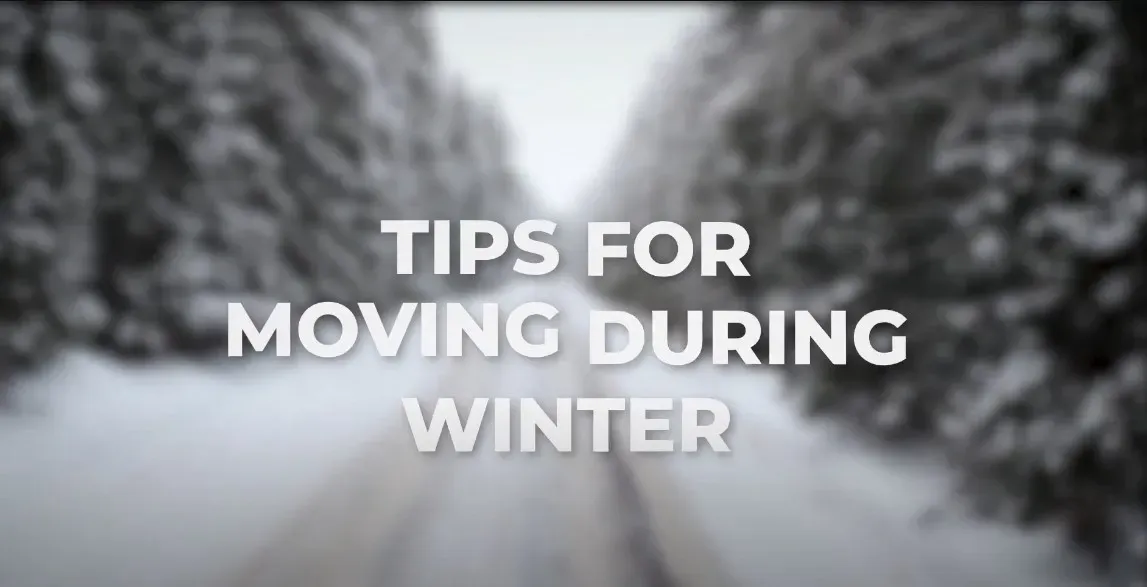Snow can make moving during winter challenging and stressful. While winter weather might seem manageable at first, heavy snow, icy surfaces, and freezing temperatures can complicate the process. With proper planning and the right precautions, you can ensure a smooth and safe relocation. This guide outlines the essential tips, checklists, and risks to keep in mind when moving in snowy or cold weather.
Problems That Come With Moving In The Winter
Winter brings unique challenges that can disrupt moving plans and cause damage to belongings. From icy surfaces to unpredictable storms, it’s important to address potential issues early.
Common Problems During Winter Moves
- Icy surfaces: Slippery driveways and walkways increase the risk of slips, trips, and falls.
- Unpredictable weather: Sudden snowstorms or extreme weather can derail your moving schedule.
- Low temperatures: Delicate or temperature-sensitive items may get damaged.
Weather Conditions That Can Cause Issues During a Move
Harsh winter weather can delay timelines and create unsafe moving conditions.
- Snow accumulation: Snow buildup during the move can make transportation difficult.
- Unplanned weather changes: Weather forecasts should be checked regularly to avoid unexpected storms.
- Scheduling conflicts: Avoid moving during times when heavy snowfall is predicted.
Tip
Plan your move for a day when snow and ice conditions are minimal, and always have a backup plan in case of delays.
Preparing for Transportation
Creating a safe environment for loading and unloading is crucial when moving in snowy weather.
Steps to Prepare Transportation Areas
- Clear pathways: Shovel driveways, sidewalks, and entrances to ensure safe access.
- Apply salt or sand: Prevent ice formation and improve grip on surfaces.
- Protect entryways: Use mats or tarps to prevent slipping.
Winter Moving Essentials Checklist
| Item | Purpose |
|---|---|
| Heavy-duty boots | Protect feet and provide traction on ice. |
| Gloves and hats | Keep hands and head warm while working. |
| Snow shovel | Clear pathways for movers and vehicles. |
| Ice melt or salt | Prevent ice buildup on driveways and paths. |
| Blankets or tarps | Protect furniture and boxes from moisture. |
Protecting Your Belongings
Cold temperatures and snow can damage your items if they are not packed properly.
How to Minimize Damage
- Use plastic bins: These are more water-resistant than cardboard boxes.
- Wrap fragile items: Use bubble wrap and blankets to insulate delicate pieces.
- Double-seal boxes: Use quality packing tape to ensure water doesn’t seep in.
- Cover furniture: Protect furniture with plastic wrap or moving blankets.
Suggestions for a Safe Snow Move
Safety should always be a top priority for both movers and drivers during winter moves.
For Movers
- Wear non-slip boots to reduce the risk of falling.
- Use dollies or carts to move heavy items on icy surfaces.
- Take regular breaks to warm up and avoid exhaustion or frostbite.
For Drivers
- Equip vehicles with snow chains for better traction.
- Keep an emergency kit in the truck, including a flashlight, blankets, and snacks.
- Maintain extra space between vehicles and drive slowly in snowy conditions.
What to Do on Moving Day
Follow these steps to ensure a smooth move:
- Start early: Maximize daylight hours for safer loading and unloading.
- Double-check pathways: Ensure all driveways and walkways are free of ice and snow.
- Cover indoor floors: Use mats or tarps to prevent muddy or wet boots from damaging floors.
- Pack essentials: Have a winter survival kit with warm clothing, food, and first-aid supplies.
When to Postpone Your Move
Sometimes, the risks of moving in snow outweigh the benefits of sticking to the schedule.
When to Consider Rescheduling
- Blizzard warnings: Safety should always come first.
- Very low temperatures: Risk of frostbite and damage to belongings increases.
- Closed roads: Inaccessible roads make moving trucks unusable.
If rescheduling is not an option, consider hiring professional movers experienced in winter relocations.
Conclusion
Relocating in the winter doesn’t have to be overwhelming. With proper planning, the right materials, and attention to safety, you can tackle even the snowiest move with confidence. Plan ahead, take precautions, and don’t hesitate to ask for help when needed. Your new home awaits—snow or shine.





